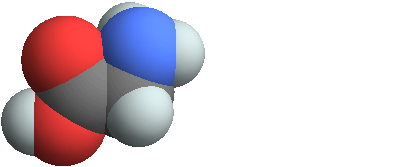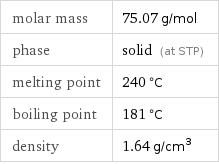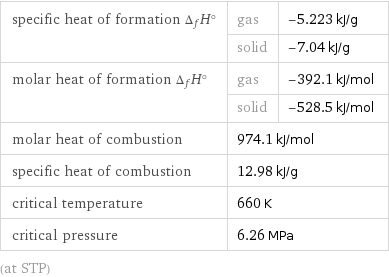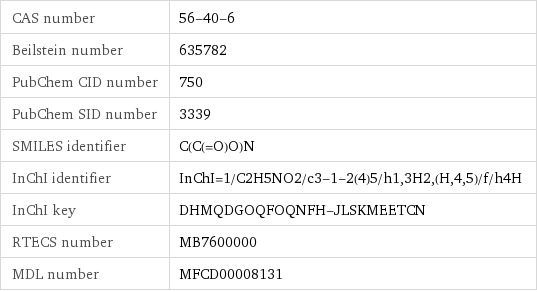Input interpretation

glycine
Chemical names and formulas

formula | NH_2CH_2COOH Hill formula | C_2H_5NO_2 name | glycine IUPAC name | 2-aminoacetic acid alternate names | acetic acid, amino- | aciport | glycocoll mass fractions | C (carbon) 32% | H (hydrogen) 6.71% | N (nitrogen) 18.7% | O (oxygen) 42.6%
Lewis structure

Draw the Lewis structure of glycine. Start by drawing the overall structure of the molecule, ignoring potential double and triple bonds: Count the total valence electrons of the carbon (n_C, val = 4), hydrogen (n_H, val = 1), nitrogen (n_N, val = 5), and oxygen (n_O, val = 6) atoms: 2 n_C, val + 5 n_H, val + n_N, val + 2 n_O, val = 30 Calculate the number of electrons needed to completely fill the valence shells for carbon (n_C, full = 8), hydrogen (n_H, full = 2), nitrogen (n_N, full = 8), and oxygen (n_O, full = 8): 2 n_C, full + 5 n_H, full + n_N, full + 2 n_O, full = 50 Subtracting these two numbers shows that 50 - 30 = 20 bonding electrons are needed. Each bond has two electrons, so in addition to the 9 bonds already present in the diagram add 1 bond. To minimize formal charge carbon wants 4 bonds and oxygen wants 2 bonds. Identify the atoms that want additional bonds and the number of electrons remaining on each atom: Fill in the 1 bond by pairing electrons between adjacent highlighted atoms: Answer: | |
3D structure

3D structure
Basic properties

molar mass | 75.07 g/mol phase | solid (at STP) melting point | 240 °C boiling point | 181 °C density | 1.64 g/cm^3
Units

Hydrophobicity and permeability properties

experimental LogP hydrophobicity | -3.4 predicted LogP hydrophobicity | -3.33 predicted LogS | 0.87
Basic drug properties

approval status | approved | nutraceutical | small molecule drug categories | dietary supplement | glycine agent | micronutrient | non-essential amino acid dosage forms | irrigation: liquid | intraperitoneal: solution

brand names | aciport | glicoamin | glycocoll | glycolixir | glycosthene | gyn-hydralin | padil
Amino acid properties

three-letter code | Gly one-letter code | G isoelectric point | 6.06 pK_a (α-COOH, (α-NH_3)^+) | 2.35 | 9.78 polarity | nonpolar codons | GGU | GGC | GGA | GGG occurrence in human proteins | 6.91%
Solid properties (at STP)

density | 1.64 g/cm^3 vapor pressure | 0.012 mmHg
Units

Thermodynamic properties

specific heat of formation Δ_fH° | gas | -5.223 kJ/g | solid | -7.04 kJ/g molar heat of formation Δ_fH° | gas | -392.1 kJ/mol | solid | -528.5 kJ/mol molar heat of combustion | 974.1 kJ/mol | specific heat of combustion | 12.98 kJ/g | critical temperature | 660 K | critical pressure | 6.26 MPa | (at STP)
Chemical identifiers

CAS number | 56-40-6 Beilstein number | 635782 PubChem CID number | 750 PubChem SID number | 3339 SMILES identifier | C(C(=O)O)N InChI identifier | InChI=1/C2H5NO2/c3-1-2(4)5/h1, 3H2, (H, 4, 5)/f/h4H InChI key | DHMQDGOQFOQNFH-JLSKMEETCN RTECS number | MB7600000 MDL number | MFCD00008131
NFPA label

NFPA label

NFPA health rating | 1 NFPA fire rating | 0 NFPA reactivity rating | 0
Safety properties

flash point | 99.5 °C
Toxicity properties

RTECS classes | mutagen